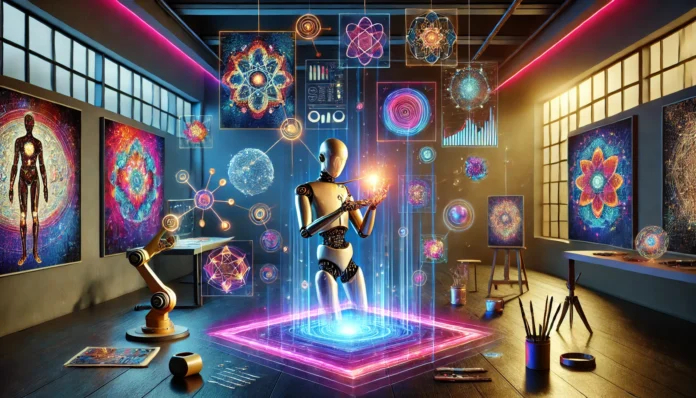Creativity has long been considered a uniquely human trait, but the rise of artificial intelligence (AI) is challenging that perception. Autonomous creativity, where AI systems generate original art, music, design, and even scientific innovations, is reshaping industries and redefining the boundaries of creative expression. With algorithms capable of producing masterpieces and solving complex problems, the question arises: can machines truly be creative, or are they simply mimicking human ingenuity?
What is Autonomous Creativity?
Autonomous creativity refers to the ability of AI systems to independently generate new and unique outputs without direct human instruction. These systems use deep learning, generative algorithms, and neural networks to analyze vast datasets, identify patterns, and create something entirely new.
How AI Achieves Creativity
1. Generative Adversarial Networks (GANs)
GANs consist of two neural networks: a generator that creates new content and a discriminator that evaluates its quality. This iterative process refines the AI’s output.
- Example: GANs are used to generate hyper-realistic art and deepfake videos.
2. Natural Language Processing (NLP)
AI models like GPT-4 produce poetry, novels, and scripts by learning linguistic nuances from vast datasets.
- Example: AI-authored books and chatbots creating interactive stories.
3. Evolutionary Algorithms
Inspired by biological evolution, these algorithms iteratively improve designs or solutions, resulting in innovative outputs.
- Example: AI-generated architectural blueprints and optimized engineering designs.
Applications of AI in Autonomous Creativity
1. Art and Design
AI is creating paintings, sculptures, and graphic designs that rival human works.
- Example: The AI-generated artwork “Edmond de Belamy” was auctioned for $432,500, sparking debates about AI’s role in fine art.
2. Music Composition
AI tools compose original music, blending genres and producing unique melodies.
- Example: AIVA (Artificial Intelligence Virtual Artist) creates scores for films, video games, and commercials.
3. Content Creation
AI writes articles, scripts, and advertising copy at scale.
- Example: Platforms like Copy.ai and Jasper assist in marketing campaigns by generating engaging content.
4. Scientific Innovation
AI accelerates discovery by designing experiments, optimizing materials, and creating solutions to complex problems.
- Example: AI-driven drug discovery platforms like Insilico Medicine develop novel compounds for pharmaceuticals.
Benefits of Autonomous Creativity
- Enhanced Efficiency: AI generates creative outputs faster than human counterparts, saving time and resources.
- Democratization of Creativity: AI tools make artistic and innovative pursuits accessible to non-experts.
- Cross-Disciplinary Applications: AI combines insights from multiple domains to create hybrid innovations.
- Endless Iteration: Machines can refine creative ideas continuously without fatigue or bias.
Challenges and Ethical Concerns
Despite its promise, autonomous creativity raises critical questions:
1. Authenticity and Value
- Can AI-generated works hold the same cultural or emotional value as human-created art?
- Does the lack of human experience behind AI creations diminish their impact?
2. Intellectual Property
- Who owns the rights to AI-generated works: the developer, the user, or the AI itself?
- Copyright laws struggle to keep pace with these developments.
3. Ethical Usage
- Deepfake videos and AI-generated misinformation highlight the darker side of autonomous creativity.
- Ensuring responsible use of such tools is essential to prevent harm.
4. Job Displacement
- AI’s ability to produce high-quality creative work may threaten employment in fields like writing, design, and music composition.
The Future of Autonomous Creativity
The evolution of AI creativity holds immense potential:
- Collaborative Creativity: AI could serve as a partner to human creators, augmenting their skills and broadening possibilities.
- Hyper-Personalized Content: AI may create tailored art, music, or stories specific to individual preferences.
- Creative Problem-Solving: Machines could tackle challenges in climate change, healthcare, and urban planning with innovative solutions.
- Humanizing AI Creations: Advances in emotional AI may enable machines to imbue their creations with deeper meaning and relatability.
Conclusion
Autonomous creativity is not just a technological milestone; it’s a redefinition of what it means to create. While AI’s ability to innovate and inspire is undeniable, the human element—emotion, experience, and intent—remains a critical component of meaningful creation. As machines take on an increasing role in the creative world, fostering collaboration between human and artificial intelligence may lead to a future where art, innovation, and imagination flourish like never before.





